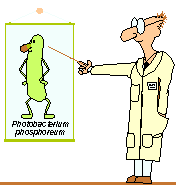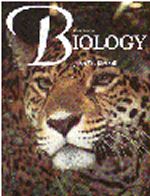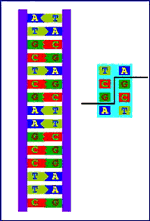10.
Why can some bacteria produce a color that others cannot?

General
Thoughts
To successfully
complete this investigation, you have to be a little familiar with DNA
and transformation. That should be clear from the background material. Doing
the pre-lab exercises will give you all the information you need and more.
We will discuss DNA, protein synthesis, DNA replication, cell division, and
biotechnology in Family
Reunion, and the experience you gain here will make learning about these
topics much easier. We discuss mutations and gene products again in "Why
do we care about fat?"
While your
text provides perfectly reasonable descriptions of DNA ,
genes, and mutations,
it lacks much detail on recombinant DNA technology and transformation. However,
the ESP
website that accompanies the textbook provides an excellent description along
with graphics and animations as the prelabs and biotechnology handbook in your lab manual.
In the previous
investigation you explored mutations and antibiotic resistance. Genes and
antibiotic resistance play a role here too. But while the antibiotic resistance
in the bacteria in the previous experiment occurred "naturally"
(with enviromental or experimental conditions increasing the likelihood),
the path to antibiotic resistance here is quite different. Be sure to report
and discuss your previous investigation's results in this week's report.
Some
Worthwhile Web Sites
|
|
|
an
explanation of the process of inserting DNA into plasmids from the MIT
Biology Hypertextbook. Simple and illustrated. |
|
|
|
Nice
text and graphic explanation of the process including examples, diagrams
of colonies on pertri plates, experiments, plasmid maps. Appropriate
detail for an introductory course. By Dr. John Kimball, a retired
professor and textbook author. |
|
|
|
background
material, text explanation and graphics from Dr. Ulrich Melcher, at
OSU. More advanced than is required, but extensive. |
|
|
|
Background
material, text explanation and graphics from Access Excellence. Appropriate
level, but detail and history make it lengthy. |
|
|
|
This
is one of the underlying processes from which the technique you are
using is derived. From the Biology Project at Arizona State University. |
|
|
|
some
multiple choice problems to test your knowledge of vocabulary and procedures
involved in transforamtion - not something we expect you memorize, but
helpful if you want to become familiar enough with the terms to use
them freely in class or in your report. From the Biology Project at
Arizona State University. |
|
|
|
Test
you knowledge about this topic using this multiple choice "tutorial"
from Cornell University's Introductory Biology Course |
|
|
Tour
of a Cell |
(Read
about how two NPR hosts try to discover what DNA sounds like then listen
to the tour) |
Some Articles found by ProQuest
Velander,
W.H., H. Lubon, and W. N. Drohan. 1997. Transgenic livestock as drug factories.
Scientific American.
Pre-lab






